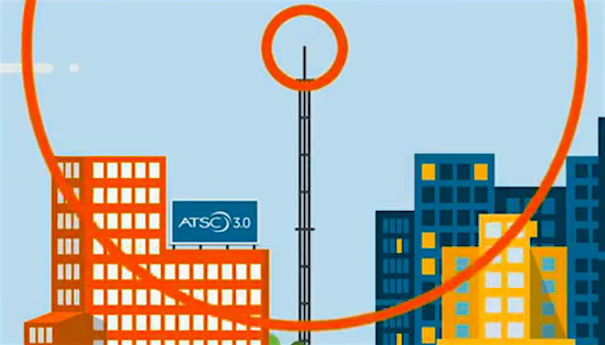Broadcasters, Cable Ops Square Off at FCC Over Signal Offloads
Issue is broadcasters' ability to divvy up signals during NextGen TV transition

Broadcasters and cable operators continue to spar over how much flexibility TV stations should have in transmitting their signals in the transition to the new ATSC 3.0 standard, specifically broadcasters' ability to have another station transmit its digital subchannels.
The idea is to ease the transition from ATSC 1.0 to the ATSC 3.0 transmission standard, also known as NextGen TV, which is not backward compatible.
In November 2021, the Federal Communications Commission tentatively concluded that NextGen TV broadcasters should be granted a sublicense of sorts to allow them to contract with another “host” station or stations to carry their simulcast multicast streams, whether that is in ATSC 3.0 or the current 1.0 format.
Also: Broadcasters Ask FCC to Dismiss Cable's ATSC 3.0 Concerns
The FCC is allowing stations to partner on distribution arrangements so that broadcasters can continue to deliver a primary TV station signal stream in ATSC 1.0, given that ATSC 3.0 is not backward compatible with current sets.
The National Association of Broadcasters, in a petition for declaratory rulemaking, asked the FCC to declare “that various multistation arrangements for hosting and originating multicast streams in ATSC 1.0 and 3.0 are OK.”
At issue for cable operators is whether broadcasters could use that petition as a means to circumvent media ownership limits, a concern NAB said is “unfounded and unrealistic.”
NAB has asked the FCC to allow an originating station in a market to strike a deal with another station to host its ATSC 1.0 multicast signals even when the originating station is not using its own bandwidth to transmit those streams in the new ATSC 3.0 standard (non-simulcasting agreements).
Cable operators, represented by the American Television Alliance, have told the FCC they are concerned that could be used by broadcasters to aggregate spectrum and “evade” the FCC‘s prohibition on one TV station owner controlling more than one of the top-four rated stations in a market.
Broadcasters countered that the FCC could require a broadcaster to demonstrate that it was not trying to evade the rules by showing that it did have the capacity to host the multicast programming if it chose to.
Setting Multicast Limits
ATVA said that is a step in the right direction. But it also said the FCC should limit the nonsimulcasting agreements to five years, and make recurring certifications that the hosting arrangements are not necessary to the originating station‘s ongoing operations.
NAB argues that, instead, “to prevent the abuse of the Commission’s processes and the waste of both Commission and broadcaster resources, NAB has proposed that a broadcaster should only be required to submit such a showing in response to a Commission inquiry or a complaint that made a prima facie case the Commission deems worth of a response.”
Though cable operators have told the FCC they “have no interest in becoming the multicast police,” that characterization was “neither accurate nor reasonable,” in NAB‘s view, the broadcast group told the FCC in a meeting, according to FCC documents. “Representatives of cable companies are the only parties to have objected to the substance of NAB’s proposal because these companies assert they will be uniquely injured by broadcasters’ entirely theoretical abuse of this rule,” NAB told the FCC. ■
The smarter way to stay on top of broadcasting and cable industry. Sign up below
Contributing editor John Eggerton has been an editor and/or writer on media regulation, legislation and policy for over four decades, including covering the FCC, FTC, Congress, the major media trade associations, and the federal courts. In addition to Multichannel News and Broadcasting + Cable, his work has appeared in Radio World, TV Technology, TV Fax, This Week in Consumer Electronics, Variety and the Encyclopedia Britannica.

